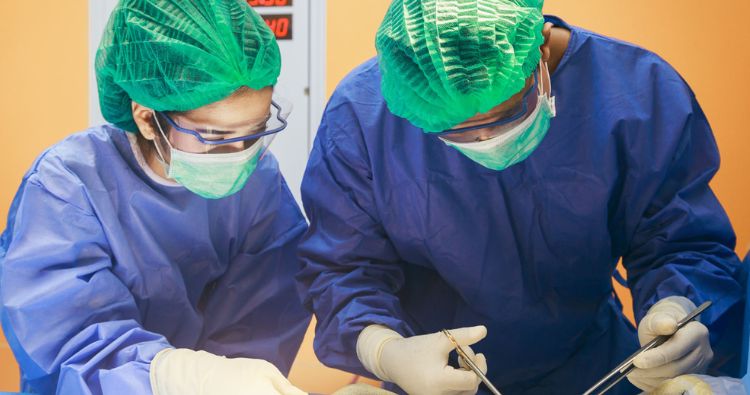

07 October, 2024
Infertility is a complex challenge for many couples, but advancements in medical technology offer new hope. One of these treatments is laparoscopy, a minimally invasive surgery that is extremely important in infertility diagnosis and treatment.
Most laparoscopic surgeons will do this operation to diagnose and treat several issues that contribute to infertility, increasing the possibility of conceiving. Here’s a comprehensive look at how laparoscopic doctors help in the journey toward parenthood.
Laparoscopy is a surgical procedure that allows doctors to check reproductive organs in a less invasive manner. During the process, a small camera known as a laparoscope is placed into the abdomen through tiny incisions.
This camera displays real-time photos on a screen, allowing the clinician to examine the uterus, fallopian tubes, and ovaries clearly.
By using laparoscopy, doctors can investigate issues such as:
Endometriosis: A condition where tissue similar to the uterine lining grows outside the uterus.
Fibroids: Noncancerous growths in the uterus that can interfere with conception.
Adhesions: Scar tissue that can cause organs to stick together, potentially blocking egg movement.
Ovarian Cysts: Fluid-filled sacs on the ovaries that may impact ovulation.
Laparoscopy provides clear visibility into these disorders, allowing for quick and accurate diagnosis and treatment where possible. This has provided significant relief to some couples diagnosed with unexplained infertility.
The laparoscopy procedure typically involves the following steps:
1. Preparation: Patients undergo preoperative tests and are advised to avoid eating or drinking for a certain period before surgery.
2. Anesthesia: General anesthesia is administered, so patients are asleep and feel no pain during the procedure.
3. Incision: A small incision is made near the navel, and the abdomen is inflated with gas to improve visibility and access to organs.
4. Insertion of Laparoscope: The laparoscope is inserted through the incision, providing a detailed view of the reproductive organs.
5. Diagnosis and Treatment: Doctors inspect the organs for any abnormalities. In some cases, they can treat conditions such as endometriosis, fibroids, or adhesions during the same procedure.
6. Closure: Once the procedure is complete, the gas is released, and the incision is closed with sutures or adhesive strips.
Depending on the complexity of the situation, the laparoscopy for infertility procedure often takes 1 to 2 hours. This basic approach allows for faster evaluation and management of the condition than traditional open surgery.
A common concern among patients is whether laparoscopy for infertility is painful. Pain is not felt during surgery since general anesthetic is utilized. Most patients have minor discomfort around the incision site after the treatment, as well as stomach pain caused by the gas used to inflate the abdomen.
This discomfort is often controllable with prescribed medicine and usually resolves within a few days.
Most people experience significantly less pain after laparoscopy than after open surgery, making this minimally invasive surgery preferred by both patients and doctors. However, if the distress continues or gets worse, it is critical to seek medical attention.
The recovery time for laparoscopy is relatively quick, especially compared to traditional surgery. Here’s what patients can generally expect post-surgery:
● Immediate Recovery: Many patients can go home on the same day as the surgery or the following day.
● Rest and Healing: It’s common to experience mild discomfort, bloating, or shoulder pain due to the gas used during the procedure. These symptoms usually resolve within a few days.
● Resuming Activities: Most patients return to light activities within a week, while more strenuous activities should be avoided for two weeks to ensure proper healing.
However, recovery typically lasts up to two weeks. Following the doctor's advice for activity limitations and wound management may also help you recover quickly.
The cost of laparoscopy for infertility frequently depends by a variety of factors, including geographical location, healthcare facility, and the specific treatments required during the surgery. In some areas, laparoscopic treatments are considered less expensive.
It's important to talk to your healthcare provider and insurance company to understand the costs. Many insurance plans may cover part or all of the treatment if it’s considered medically necessary.
Knowing these details can help couples make better decisions about their reproductive treatment path.
If you’re considering IVF (in vitro fertilization) IVF (in vitro fertilization) as part of your fertility journey, it’s crucial to know the time gap between laparoscopy and IVF. Normally, doctors advise waiting for one to three monthly cycles following the laparoscopy before commencing ivf treatment.
This period gives the body enough time to recover completely as well as to enhance the efficacy of the ivf procedure.
In certain situations, it is possible for couples to get pregnant naturally within that period of time, especially when the laparoscopic surgery was performed to remove conditions that were specifically causing infertility, such as endometriosis or adhesions
Always consult with your fertility specialist to determine the best timeline for your specific case.
Laparoscopy offers several benefits for patients dealing with infertility:
1. Minimally Invasive: Small incisions lead to less pain, minimal scarring, and faster recovery.
2. Accurate Diagnosis: The procedure provides a direct view of the reproductive organs, allowing doctors to detect issues that might not show up in other tests.
3. Simultaneous Treatment: In many cases, doctors can treat the identified condition during the same procedure, reducing the need for additional surgeries.
4. Improved Fertility: Treating underlying conditions like endometriosis or fibroids can enhance natural conception chances or increase the success rate of assisted reproductive techniques.
Many fertility doctors prefer laparoscopy due to its diagnostic and beneficial capabilities.
Laparoscopic doctors play a crucial role in infertility care. They can diagnose, treat, and improve the chances of pregnancy in many infertile couples with minimally invasive surgery.
Laparoscopic doctors play a crucial role in infertility care. They can diagnose, treat, and improve the chances of pregnancy in many infertile couples with minimally invasive surgery.
